Features
The Resurrection of Fiji

Law, Diplomacy and the Politics of Human Rights
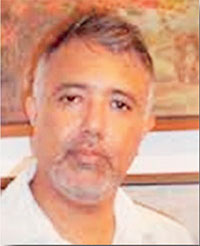 by Dr. SinhaRaja Tammita-Delgoda
by Dr. SinhaRaja Tammita-Delgoda
Sri Lanka will shortly be facing renewed scrutiny at the United Nations Human Rights Council in Geneva, where elements of the international community have been calling for action over unsubstantiated war crimes allegations. This may lead to sanctions against senior officers of the Sri Lanka armed services and even political leaders.
Sri Lanka’s response has been characterized by the usual lack of preparedness, last minute flurries of activity and panic. There has been very little research, serious study or thinking. This has been the hallmark of Sri Lankan strategic and diplomatic thinking over the years.
The current president of the UNHRC is Fiji’s ambassador in Geneva, Nazhat Shameem Khan, a diplomat and former judge, who has been the Permanent Representative of Fiji to the United Nations since 2014. Khan, who served as the council’s vice president in 2020, was elected on January 15, 2021.
This story began at the UN Headquarters in New York in 2018 when Fiji won its bid for a seat on the United Nations Human Rights Council, receiving the second highest number of votes among all the candidate. This was a moment of global success for Fiji, giving this small Pacific nation international recognition for its advancement and protection of human rights.
What is not widely known is that since independence Fiji has had a tumultuous recent history, characterized by ethnic tensions, military coups and recurrent suspensions of the democratic process. A closer look will reveal strong historic parallels and many commonalities between Sri Lanka and Fiji. Both countries have had to face similar problems and the challenges. These parallels and commonalities are clear and immediate and deeply relevant.
Like Sri Lanka, an island nation, Fiji was colonized by the British during the 19th century. The second Governor of Fiji (1875-1880) was the Liberal Party politician and colonial administrator Sir Arthur Hamilton-Gordon, who went onto become the 16th governor of British Ceylon (1883–1890).
Hamilton- Gordon’s policies were to have decisive influence in the shaping the history of modern Fiji. He presided over the suppression of an uprising against the British in the central highlands. As with the suppression of the Kandyan rebellion in 1818, the British adopted a scorched earth policy, burning rebel villages and destroying fields.
In 1878 Gordon decided to import indentured labourers from India to work on the sugarcane fields which had replaced the cotton plantations. As in Sri Lanka, this began a wave of emigration which completely transformed the social, ethnic and political dynamics, leaving an enduring impact on the country. Whereas native Fijians, iTaukei, remain the majority (54 %), Indo-Fijians, the descendants of these Indian laborers now comprise 38% of the population. The tension between these two ethnic groups has dominated the politics of the islands since independence.
Unlike Sri Lanka, which has remained a democracy since independence in 1948, Fiji has seen several coups and many political revolutions. It also has a history of military rule, first by Colonel Sitiveni Rabuka, later Prime Minister from 1992-1999, and then Commodore Voreqe(Frank) Bainimarama, Prime Minister since 2007. Both men seized power when they were serving officers, before going onto to become elected political leaders
In 1970 Fiji gained independence as the Dominion of Fiji. Until April 1987, it was governed by the Alliance Party, which championed policies of “multiracialism.” This government, which had a majority of Indian members in the legislature, was overthrown twice in 1987 in military coups led by Colonel Sitiveni Rabuka. These coups were driven by demands for the protection of majority rights and sought to entrench native Fijian dominance in any future government. To this end, Fiji declared itself a republic and revoked the 1970 constitution. In 1990 a new constitution, designed to concentrate power in the hands of Fijians, was established. Fiji was expelled from the Commonwealth in the same year.
Under the 1990 constitution, Colonel Rabuka was elected to parliament and went on to become prime minister in 1992. In 1999 Mahendra Chaudhry became Fiji’s first prime minister of Indian origin. Chaudhry’s premiership was bitterly opposed by Fijian nationalists, and in May 2000 he and his government were taken hostage and deposed by a military backed group, claiming to be acting for indigenous Fijians. A counter coup was launched by the Commander of the Armed Forces, Voreque (Frank) Bainimarama. The rebels were neutralized and an interim military government was formed. This led to the restoration of democracy and new elections.
However, the tensions between the military and the elected government remained. In December 2006, Bainimarama seized power in another coup, removing the prime minister and establishing himself as the country’s sole leader. In January 2007 he restored executive powers to the President, Ratu Josefa Iloilo(2000-2006, 2007-2009), who then named Bainimarama as the head of an interim administration. In 2009, the Fiji Court of Appeal ruled that the Bainimarama government was illegal. In response, President Iloilo abrogated the 1997 constitution and dismissed the country’s judges. National elections were postponed and another interim government appointed, again with Bainimarama as prime minister.
During this period Fiji was isolated and largely ostracized by western powers such as Australia, New Zealand, UK and Europe. Fiji’s participation in UN peacekeeping operations was also suspended. Neighbouring Australia and New Zealand were the loudest international critics and in 2009 Fiji expelled both the Australian and the New Zealand ambassadors, accusing them of interfering in the Fijian judiciary. Fiji also shut down many NGOs. In the same way as Sri Lanka, Fiji was forced to look beyond its traditional partners towards China, who refrained from involving herself in domestic politics.
Only in 2014, after years of delays, did a democratic election take place. The parliamentary elections of 2014 were won by Bainimarama’s Fiji First party. Bainimarama, who had resigned as head of the military in March, was sworn in as prime minister. In the 2018 general election the Fiji First Party won again an outright majority for the second time and Bainimarama was sworn in as Prime Minister for a second term.
In 2017 Fiji presided over the United Nations Climate Change Conference (COP23).It was the first time a small island developing state had assumed the presidency of the negotiations. Fiji’s ability to preside over an international meeting of this calibre signalled its growing reinstatement within the international order. This was followed a year later, by Fiji’s election to the seat on the United Nations Human Rights Council.
It is an extraordinary story, the resurrection of a nation which was an international outcast and its transformation into a human rights champion and a pillar of the international community. How did this turnaround take place?
Many of the answers appear to lie in the efforts of Fiji’s Permanent Representative in Geneva, Nazhat Shameem Khan. Fiji opened its first Mission in Geneva in 2014, barely months before the country’s Universal Periodic Review at the Human Rights Council. Under this process the human rights situation of all UN Member States are reviewed every five years. Every year, 42 States are reviewed during three Working Group sessions. The result of each review is reflected in the Final Report of the Working Group, which then lists the recommendations which each country will have to implement. Khan proved herself a skilled diplomat and negotiator and a convincing advocate. Not only did Fiji succeed in passing the review. In less than three years, she has managed to secure the Presidency of United Nations Climate Change Conference and now the UNHRC.
One of Fiji’s pre-eminent judges, Khan was educated at Sussex University and Cambridge, where she obtained a Master of Philosophy in Criminology. In 1983 she was admitted to the Bar of England and Wales at the Inner Temple in London. In 1994 Khan became the first woman in Fiji to be appointed as the Director of Public Prosecutions and in 1999, she became Fiji`s first female High Court judge. In 2009 she became a private practitioner, concentrating on training lawyers and judges in human rights law, sentencing law, governance and litigation.
There is a background of law and human rights in the family. Khan’s sister, Shaista Shameem, also a lawyer, was the director and then chairman of the Fiji Human Rights Commission (FHRC), later serving as United Nations Special Rapporteur on the Use of Mercenaries (2004-2005) and becoming a member of the UN Working Group. During her time as chairman of the FHRC, Shameem published a report defending the 2006 coup, an action which was strongly criticized by Human Rights Watch. What is striking is that despite their legal and human rights background, both sisters have played an important role in defending and rehabilitating their country.
What appears to have gone unnoticed is the role played by many Sri Lankans in helping revive Fiji’s judicial sector and resuscitate the country’s international reputation. During the years when Fiji was frantically trying to establish law and order, many Sri Lankans played key roles in rebuilding the country. Some of the most important judicial offices were all held by Sri Lankans and until 2014 the Fijian judiciary was heavily dependent on Sri Lankan expertise. This was despite the considerable pressure which was put on many Sri Lankans not to live or work in Fiji. In 2009 Fiji’s chief justice, Anthony Gates, accused Australia and New Zealand of telling a number of Sri Lankan judges that they would be banned from entering Australia or New Zealand if they took up appointments on the Fiji bench.
Although as a country Sri Lanka has not helped Fiji, there remains a deep recognition and gratitude towards the many Sri Lankans who lived and worked in the country during this time. There are strong connections and in some cases enduring relationships. Shameem Khan herself has worked alongside Sri Lankan jurists and is very conscious of their skill, expertise and integrity.
The prima facie evidence suggests that Sri Lanka could be dealing with a sympathetic interlocutor with whom it already has many connections. Even at this late stage however, there are options and strategies which can be pursued.
This administration has three to four research institutions at its disposal, the BCIS, the Institute of National Security, the Lakshman Kadirgamar Centre and the Kotalawela Defence University. Yet there has been no study or appraisal of these potential links and their possible connections. It is clear from the public discourse that we have no idea of whom we are dealing with, what their backgrounds are and where their skills and attitudes lie. Perhaps we have not even begun to think about it.
The resurrection of Fiji seems to have taken place within a decade, much the same decade that Sri Lanka found itself being gradually isolated and targeted. Through the use of law, human rights and diplomacy, Fiji has rebuilt its place in the world. The parallels suggest that this has been achieved through the implementation of a carefully calibrated national strategy, one which has been concerted, sustained and informed. It shows what could have been done and how.
Features
Defining Oxygen Economy for sustaining life on Earth and growing intergenerational wealth
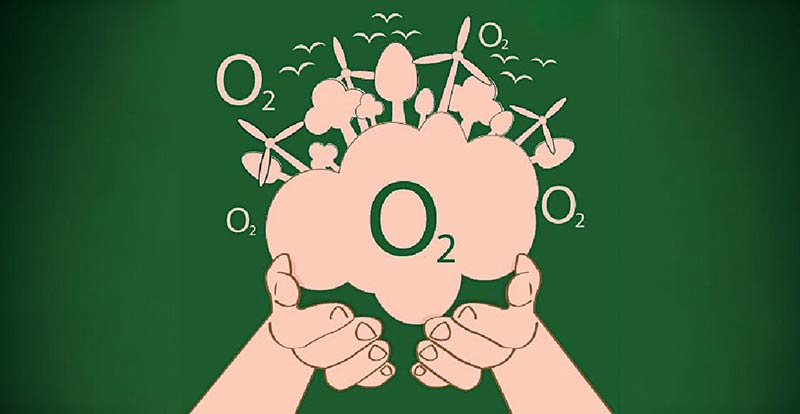
by Dr. Ranil Senanayake
The Oxygen that is present in the air that we breathe is the birth right of every organism that lives on this planet. It is free for everyone. However, the action of some to take out more than their share, without replacement, has created a condition, where the Global Commons of air is being rapidly degraded,
The most critical component of air is Oxygen. It surrounds us, filling our lungs with every breath we take. It is the invisible gift of nature that we take for granted. But this essential resource—the very foundation of life— is being constricted, because the volume of trees, plants, and photosynthetic organisms that produce oxygen is being lost across the planet. Further, there is no initiative for this generation capacity to be increased as a matter of urgency. exploited at present? Why couldn’t increasing the generation capacity of Oxygen have economic value? Could those who benefit most from using the resources of the Global Commons be required to contribute to its maintenance? This is the idea behind the Oxygen Economy, a bold and transformative concept that seeks to address environmental and social challenges in a way that is fair, sustainable, and forward-thinking beyond GDP value which measures the success of our societies today.
What Is the Oxygen Economy?
The Oxygen Economy is a financial framework, that recognises the value of the global stocks of Oxygen within the commons and records the deposition and consumption through economic activity.
The Oxygen Economy is a principled framework that recognises the stocks, transactions and deposits of Oxygen into the Global commons and assigns value to stocks from privately contracted production units, it stems from a growing recognition that Oxygen is a declining resource with an easy replenishment response.
Oxygen, considered a “free” resource. It is not. Much like oil and coal it is a ‘fossil’ resource that has been a part of the atmosphere for millions of years. It has been slowly declining, but is ‘topped up’ by a service provided by the earth’s ecosystems —particularly trees, plants, and other photosynthetic organisms. These organisms create molecular Oxygen through the process of photosynthesis, supporting life on earth and maintaining the balance of our atmosphere.
At its core, the Oxygen Economy aims to ensure that those who produce contracted and monitored oxygen, be it towns, farmlands, rural or forested lands, are fairly compensated for their efforts. It also holds industries and private-sector entities that benefit from oxygen consumption accountable in maintaining the sustainability of this resource.
What is the urgency to address oxygen as a depleting resource?
Other than the obvious fact of falling global stocks, the need of an Oxygen Economy arises from the urgency of addressing two critical challenges facing humanity: environmental degradation and economic inequality. Placing value on Oxygen production could effectively provide an effective response to both. For decades, efforts to combat climate change have focused primarily on carbon
sequestration. While important, the focus on Carbon sequestration often overlooks other vital ecosystem services, including oxygen production that can contribute towards a growing wealth paradigm. Oxygen, like water and food, is essential for life. However, unlike other resources, it has largely been treated as infinite and freely available, which it is not. In reality, the supply of Oxygen to the atmosphere is decreasing due to deforestation, while the consumption of Oxygen by space exploration, industrial production, war and transport are increasing. Today Oxygen levels have dropped by approximately 2%, raising concerns about the long- term sustainability of this critical resource.
How the Oxygen Economy works
The Oxygen Economy operates on the principles of private property being valued using financial tools such as valuation guarantees, stakeholder contracts and Insurances to monetise contractually produced oxygen as a financial product. This involves three key components:
1. Valuation guarantee:
Assigning an economic value to the oxygen produced by contracted and registered units in identified geographical areas of production is based on the researched, monitored and validated measurements of oxygen generation by trees / plants or photosynthetic organisms such as Cyanobacteria.
2. Deposition guarantee:
Issuance of certificates of completion and deposit of Oxygen into the global Commons Stakeholder Contracts and Compensation: Establishing formal agreements between oxygen consumers (e. g., corporations / Space exploration companies) and contracted oxygen producers (e.g., farmers, Local communities)
3. Policy and regulation: Introducing replicable legal frameworks at a regional scale to enforce accountability and prevent the uncontrolled exploitation of global oxygen resources.
Lessons from Sri Lanka
One country that is already exploring the potential of the Oxygen Economy is in the bioregional area of Sri Lanka. Known for its rich biodiversity and commitment to environmental stewardship, Sri Lanka has implemented initiatives that align with the principles of the Oxygen Economy. In one notable project, women from farming communities established and nurtured trees using contracts that measured and validated payments for photosynthetic biomass on an annually recurring basis for a period of four years. The stakeholders earning substantive income from this project were sensitised to the emerging Oxygen Economy while contributing their obligations to global environmental resilience. Over three years, these participants generated thousands of litres of oxygen, demonstrating that the concept is not only viable but also impactful.
Scaling the Oxygen Economy globally:
While Sri Lanka’s efforts are a promising start, the true potential of the Oxygen Economy
lies in its ability to scale globally. Imagine a world where farmers are compensated for the establishment of trees, where rural and even urban greenery projects could receive funding to expand their impact for this paradigm of business. Such a system would not only help combat climate change but also address economic inequalities of the current GDP paradigm, by together contracting the Oxygen economic asset tool to those who sustain the planet’s life-support systems.
Addressing potential challenges
Like any transformative idea, the Oxygen Economy faces potential challenges. Critics may argue that assigning a monetary value to Oxygen risks commodifying a natural resource that should remain freely accessible. Others may question the feasibility of measuring, validating and regulating oxygen production on a global scale. These concerns can be addressed by emphasising the ethical principles behind the Oxygen Economy. The goal is not to charge people for breathing but to ensure that those who contribute to its sustainability profit from financial contracts for Oxygen production. Additionally, such transparent systems for measuring and validating oxygen production will be crucial for building trust and ensuring fairness towards the vision of accounting for intergenerational wealth beyond the GDP framework that exists.
A vision for the future
The Oxygen Economy represents a paradigm shift in how we think about our relationship with the planet. It challenges us to move beyond the notion of nature as an infinite resource and to recognise the boundaries of our Global Commons. The true value of planet Earth is as an ecosystem that sustains life for all biota. By aligning economic practices with environmental stewardship, the Oxygen Economy offers a path towards a more equitable and sustainable future. It supports the foundations of intergenerational wealth that will be reflected in our contributions to the cycling atmospheric gasses of our Global Commons.
Imagine a world where the air we breathe is not taken for granted but is cherished and protected. Where farmers, communities, and ecosystems are rewarded for their contributions to the planet’s well-being. Where industries operate with a framework of accountability to prioritise the health of our shared environment. This is the vision of the Oxygen Economy—a vision that is within our reach if we act together, with urgency and determination, to lay well informed, solid foundations.
Features
Two sides to a coin; each mourn threat; no threat, no budget blues

 The coin Cassandra starts her Friday Cry with the recent film Rani. Parroting what her friends said on seeing the film, Cass in her Cry just prior to this wrote: “It has been reviewed as outstanding; raved over by many; and already grossed the highest amount in SL cinema history – Rs 100 million from date of release January 30 to February 14. This last: testimony to its popular appeal and acceptance as an outstanding cinema achievement.
The coin Cassandra starts her Friday Cry with the recent film Rani. Parroting what her friends said on seeing the film, Cass in her Cry just prior to this wrote: “It has been reviewed as outstanding; raved over by many; and already grossed the highest amount in SL cinema history – Rs 100 million from date of release January 30 to February 14. This last: testimony to its popular appeal and acceptance as an outstanding cinema achievement.
” Cass admitted she had not seen the film. She now realises her reluctance to jostle in the crowd in one of many cinemas retelling the murder of Richard de Zoysa and traumatic mourning of his mother, Manorani, was because there grew in her a distaste after watching short previews on YouTube of parts of the film. Most centered on is Swarna Mallawarachchi, starring as Manorani, downing alcohol and smoking cigarette after cigarette. Director Asoka Handagama was sensationlising the more dramatic incidents of the tragedy. That was to please the crowd.
We Sri Lankans, or many, have absolutely no tight upper lip. Most funerals of yesteryear and many rural ones still have writhing moaning and groaning and appeals to the dead to smile one more time, say a word, rise up. These loud gasped cries in between sobbing sent Cass wickedly into silent giggles. She thought: what if the dead obliged with even one request. Worst, if he rose up and sat in his coffin. The first to run away would be the callers! People love wallowing in sniffles of sorrow. Audiences much prefer fictionalised retelling of events to documentaries about them. Handagama does style his film as fictionalised history but he definitely is guilty of sensationalism. Cass’ gut feelings have been given words in a criticism on Face Book which was shared with Cass by a nephew.
The sent around message is titled: Misconceived, Misinterpreted, Miscast and a Big Mistake. That tells it all. However there follows an incisive critique of the film Rani by one of Richard’s friends who knew Manorani well and how she was after her son’s death. He signs himself, but Cass will not quote the name here since there is much truth, lies and even hidden agendas in what is posted on social media.
He writes: “Badly acted, badly directed and badly researched … A clear example of character assassination via a deliberate misuse of artistic license! … I want to state my opinion about two people that many of us loved, respected and knew intimately.” He then goes on to point out mistakes and exaggerations: Manorani was never even bordering on alcoholism and hardly ever smoked. And when she did, socially or to dim her sorrow, she did it elegantly. A Man Friday commented: they should have taught Swarna how to hold a cigarette and smoke it as it should be smoked. Hence my contention, every coin, even a box office success, has two sides to it, two diverse criticisms and in-betweens. Decision: Cass will not queue for a cinema ticket.
Each morn
Phoned a US living friend who was recovering from a harsh winter’s gift to her – severe flu. She said the flu was leaving her but depression and distraught-ness about hers and the US’s future were threatening to drown her in emotional turmoil much worse than the worst cough ‘n cold.
I knew the reason – Trump’s trumpets of new opinions, threats, enactments et al. She dreaded getting up each morning wondering what new calamity was to descend on the American people and by influence, spreading to the world. Her son has forbidden TV news watching and reading the newspapers which she says are so opposed to media treatment of the Prez.
I could very well sympathise with her. We in Sri Lanka suffered bouts of such threatened discomfort, nay calamitous warnings and sheer dread. My remembering mind went to Shakespeare in his tragic play Macbeth. Macduff’s description of Scotland under the reign of Macbeth to Malcolm, son and heir of murdered Duncan now sheltered in England, goes thus: “Each new morn/ New widows howl, new orphans cry/ new sorrows strike heaven on the face that it resounds.”
Cass does not know about you but dread lurked in her heart and mind when the JVP 1989 insurrection took place – for her teenage son. The LTTE and suicide bombs caused utter destruction of life, limb and infrastructure. Families who had travelled together now travelled to schools and workplaces separately since no bus or train was safe. Nor were the privately owned cars. Then came two tyrant Presidents with sudden deaths of prominent persons and media personnel like Richard and Lasantha and many others.
Blatant robbing of our money had us gasping helplessly. Riff raff rose in power and lorded, one such tying a man to a stake for not attending a meeting. Then rode to power on popular vote another brother in the newly created powerful dynasty. Word of mouth minus stroke of pen had orders given out to be promptly executed. White vans which plied the streets were reduced but worse happened.
One order and the rice fields had no grain, fruits dried on trees, forex earning luscious two leaves and a bud withered and could not be plucked. Bankruptcy resulted. But we had a ‘shipless’ harbour which had to be mortgaged for a song to the Chinese; a plane-less airport sounding death to elephants and peafowl; and a gaudy tower to gaze on or commit suicide from. A gathering of people on Galle Face Green righted things.
Then came into power a party that had two men and a woman in Parliament which yielded a true Sri Lankan with country first and last in mind, as President. Followed a sharp victory for the coalition of parties led by the hopefully reformed JVP so that three seats became almost two thirds of all seats in Parliament and a woman as Prime Minister. She had no connection to previous Heads unlike a former woman PM and Prez. The first woman PM rode to power weeping for her murdered husband; the younger very promising Prez because she was daughter of two Heads of Sri Lanka. But there was, even under their reign, mutterings and difficulties.
Truth be told, we sleep better at night and wake up with no dread in our innards. We rise to shine (if possible, in the heat of Feb) knowing people are working and corruption is not wrought by those in power. Thank goodness and our sensible voters for this peace we savour.
2025 Budget
Cass’ title has the phrase ‘no budget blues’. Looks like it is generally correct. Of course, the Opposition is criticising Finance Minister AKD’s presented budget. Cass is no economist, not by a long chalk, but she was glad to see that expenditure on health and education were substantial. We had a time when the armed forces were allocated more than education and health combined. Much has been looked into: including pregnant women and the Jaffna library among a host of mentioned amenities. We have no need to pessimistically await a Gazette Extraordinary stating negative segments of the future year’s financial plan. Thanks be!
Gaza and Ukraine are worse in position and the world is awry. But Sri Lanka is in a phase where Kuveni’s curse is stilled and people are considering themselves Sri Lankans, uniting to re-make Sri Lanka Clean as it was before selfish corrupt politicians took over.
Features
As Africa toes Chinese line …
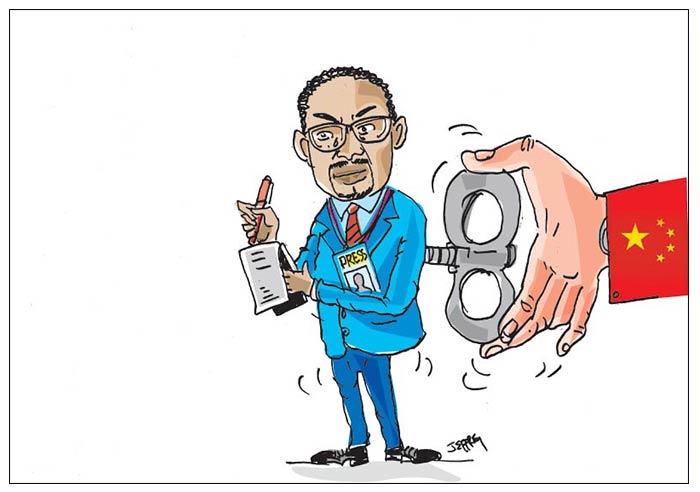
Mitchell Gallagher
Every year, China’s minister of foreign affairs embarks on what has now become a customary odyssey across Africa. The tradition began in the late 1980s and sees Beijing’s top diplomat visit several African nations to reaffirm ties. The most recent visit, by Foreign Minister Wang Yi, took place in mid-January 2025 and included stops in Namibia, the Republic of the Congo, Chad and Nigeria.
For over two decades, China’s burgeoning influence in Africa was symbolised by grand displays of infrastructural might. From Nairobi’s gleaming towers to expansive ports dotting the continent’s shorelines, China’s investments on the continent have surged, reaching over $700 billion by 2023 under the Belt and Road Initiative, China’s massive global infrastructure development strategy.
But in recent years, Beijing has sought to expand beyond roads and skyscrapers and has made a play for the hearts and minds of African people. With a deft mix of persuasion, power and money, Beijing has turned to African media as a potential conduit for its geopolitical ambitions. Partnering with local outlets and journalist-training initiatives, China has expanded China’s media footprint in Africa. Its purpose? To change perceptions and anchor the idea of Beijing as a provider of resources and assistance and a model for development and governance. The ploy appears to be paying dividends, with evidence of sections of the media giving favourable coverage to China.
But as someone researching the reach of China’s influence overseas, I am beginning to see a nascent backlash against pro-Beijing reporting in countries across the continent. China’s approach to Africa rests mainly on its use of “soft power,” manifested through things like the media and cultural programmes. Beijing presents this as “win-win cooperation”—a quintessential Chinese diplomatic phrase mixing collaboration with cultural diplomacy. Key to China’s media approach in Africa are two institutions: The China Global Television Network (CGTN) Africa and Xinhua News Agency.
CGTN Africa, which was set up in 2012, offers a Chinese perspective on African news. The network produces content in multiple languages, including English, French and Swahili, and its coverage routinely portrays Beijing as a constructive partner, reporting on infrastructure projects, trade agreements and cultural initiatives. Moreover, Xinhua News Agency, China’s state news agency, now boasts 37 bureaus on the continent. By contrast, Western media presence in Africa remains comparatively limited.
The BBC, long embedded due to the United Kingdom’s colonial legacy, still maintains a large footprint among foreign outlets, but its influence is largely historical rather than expanding. And as Western media influence in Africa has plateaued, China’s state-backed media has grown exponentially. This expansion is especially evident in the digital domain. On Facebook, for example, CGTN Africa commands a staggering 4.5 million followers, vastly outpacing CNN Africa, which has 1.2 million—a stark indicator of China’s growing soft power reach. China’s zero-tariff trade policy with 33 African countries showcases how it uses economic policies to mould perceptions.
And state-backed media outlets like CGTN Africa and Xinhua are central to highlighting such projects and pushing an image of China as a benevolent partner. Stories of an “all-weather” or steadfast China-Africa partnership are broadcast widely and the coverage frequently depicts the grand nature of Chinese infrastructure projects. Amid this glowing coverage, the labour disputes, environmental devastation or debt traps associated with some Chinese-built infrastructure are less likely to make headlines. Questions of media veracity notwithstanding, China’s strategy is bearing fruit.
A Gallup poll from April 2024 showed China’s approval ratings climbing in Africa as US ratings dipped. Afrobarometer, a pan-African research organisation, further reports that public opinion of China in many African countries is positively glowing, an apparent validation of China’s discourse engineering. Further, studies have shown that pro-Beijing media influences perceptions. A 2023 survey of Zimbabweans found that those who were exposed to Chinese media were more likely to have a positive view of Beijing’s economic activities in the country. The effectiveness of China’s media strategy becomes especially apparent in the integration of local media.
Through content-sharing agreements, African outlets have disseminated Beijing’s editorial line and stories from Chinese state media, often without the due diligence of journalistic scepticism. Meanwhile, StarTimes, a Chinese media company, delivers a steady stream of curated depictions of translated Chinese movies, TV shows and documentaries across 30 countries in Africa. But China is not merely pushing its viewpoint through African channels. It’s also taking a lead role in training African journalists, thousands of whom have been lured by all-expenses-paid trips to China under the guise of “professional development.” On such junkets, they receive training that critics say obscures the distinction between skill-building and propaganda, presenting them with perspectives conforming to Beijing’s line.
Ethiopia exemplifies how China’s infrastructure investments and media influence have fostered a largely favourable perception of Beijing. State media outlets, often staffed by journalists trained in Chinese-run programmes, consistently frame China’s role as one of selfless partnership. Coverage of projects like the Addis AbabaDjibouti railway line highlights the benefits, while omitting reports on the substandard labour conditions tied to such projects—an approach reflective of Ethiopia’s media landscape, where state-run outlets prioritise economic development narratives and rely heavily on Xinhua as a primary news source. In Angola, Chinese oil companies extract considerable resources and channel billions into infrastructure projects.
The local media, again regularly staffed by journalists who have accepted invitations to visit China, often portray Sino-Angolan relations in glowing terms. Allegations of corruption, the displacement of local communities and environmental degradation are relegated to side notes in the name of common development. Despite all of the Chinese influence, media perspectives in Africa are far from uniformly pro-Beijing. In Kenya, voices of dissent are beginning to rise and media professionals immune to Beijing’s allure are probing the true costs of Chinese financial undertakings. In South Africa, media watchdogs are sounding alarms, pointing to a gradual attrition of press freedoms that come packaged with promises of growth and prosperity.
In Ghana, anxiety about Chinese media influence permeates more than the journalism sector, as officials have raised concerns about the implications of Chinese media cooperation agreements. Wariness in Ghana became especially apparent when local journalists started reporting that Chinese-produced content was being prioritised over domestic stories in state media.
Beneath the surface of China’s well publicised projects and media offerings, and the African countries or organisations that embrace Beijing’s line, a significant countervailing force exists that challenges uncritical representations and pursues rigorous journalism. Yet as CGTN Africa and Xinhua become entrenched in African media ecosystems, a pertinent question comes to the forefront: Will Africa’s journalists and press be able to uphold their impartiality and retain intellectual independence? As China continues to make strategic inroads in Africa, it’s a fair question.
(The writer is a PhD candidate of political science at Wayne State University, US. This article was published on www.theconversation.com)
-

 Sports7 days ago
Sports7 days agoRemarkable turnaround for Sri Lanka’s ODI team
-

 Features7 days ago
Features7 days agoScammed and Stranded: The Dark Side of Sri Lanka’s Migration Industry
-

 Business7 days ago
Business7 days agoUN Global Compact Network Sri Lanka: Empowering Businesses to Lead Sustainability in 2025 & Beyond
-
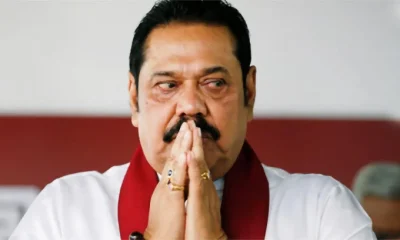
 Features6 days ago
Features6 days agoDon’t betray baiyas who voted you into power for lack of better alternative: a helpful warning to NPP – II
-

 News4 days ago
News4 days agoCommercial High Court orders AASSL to pay Rs 176 mn for unilateral termination of contract
-
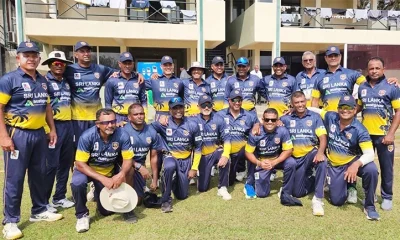
 Sports3 days ago
Sports3 days agoSri Lanka face Australia in Masters World Cup semi-final today
-
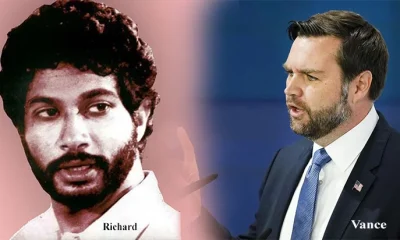
 Features6 days ago
Features6 days agoTwo films and comments
-
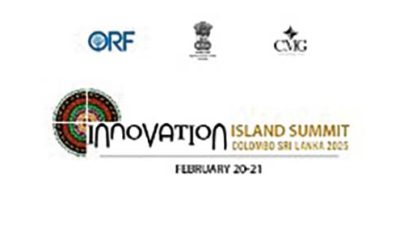
 News7 days ago
News7 days agoInnovation Island Summit 2025, Colombo, Sri Lanka











